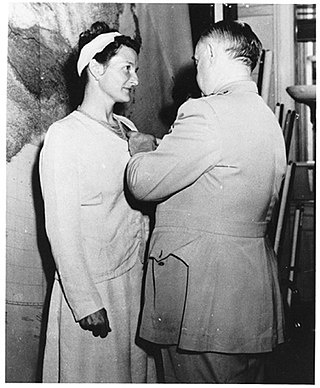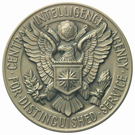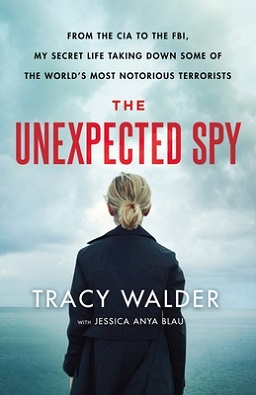
James Hardesty Critchfield was an officer of the US Central Intelligence Agency who rose to become the chief of its Near East and South Asia division. He also served as the CIA's national intelligence officer for energy in the 1970s and after he retired in 1974, he became an energy policy consultant in the Middle East, serving such clients as Sultan Qaboos of Oman. Critchfield served as the president of a Honeywell, Inc. subsidiary called Tetra Tech International.
As early as the 1920s, the Soviet Union, through its GRU, OGPU, NKVD, and KGB intelligence agencies, used Russian and foreign-born nationals, as well as Communists of American origin, to perform espionage activities in the United States, forming various spy rings. Particularly during the 1940s, some of these espionage networks had contact with various U.S. government agencies. These Soviet espionage networks illegally transmitted confidential information to Moscow, such as information on the development of the atomic bomb. Soviet spies also participated in propaganda and disinformation operations, known as active measures, and attempted to sabotage diplomatic relationships between the U.S. and its allies.

Virginia Hall Goillot DSC, Croix de Guerre,, code named Marie and Diane, was an American who worked with the United Kingdom's clandestine Special Operations Executive (SOE) and the American Office of Strategic Services (OSS) in France during World War II. The objective of SOE and OSS was to conduct espionage, sabotage and reconnaissance in occupied Europe against the Axis powers, especially Nazi Germany. SOE and OSS agents in France allied themselves with resistance groups and supplied them with weapons and equipment parachuted in from England. After World War II Hall worked for the Special Activities Division of the Central Intelligence Agency (CIA).

David Atlee Phillips was a Central Intelligence Agency officer of 25 years and a recipient of the Career Intelligence Medal. Phillips rose to become the CIA's chief of operations for the Western hemisphere. In 1975, he founded the Association of Former Intelligence Officers (AFIO), an alumni association comprising intelligence officers from all services.

The Distinguished Intelligence Medal is awarded by the U.S. Central Intelligence Agency for performance of outstanding services or for achievement of a distinctly exceptional nature in a duty or responsibility.
The Distinguished Intelligence Cross is the highest decoration awarded by the United States Central Intelligence Agency. It is given for "a voluntary act or acts of extraordinary heroism involving the acceptance of existing dangers with conspicuous fortitude and exemplary courage". Only a handful of people have been awarded this medal in the history of the agency, most posthumously. As a consequence, it is one of the rarest awards for valor in the United States.
S. Eugene Poteat was a retired senior Central Intelligence Agency executive. He was awarded the CIA's Intelligence Medal of Merit and the National Reconnaissance Office Meritorious Civilian Award. He was President of AFIO - the Association of Former Intelligence Officers for fifteen years, retiring in 2014, and appointed AFIO's President-emeritus in 2015. He previously served on the Board of Advisors of the International Spy Museum. He is currently Professor Emeritus at the Institute of World Politics in Washington, D.C., teaching a course on "Technology, Intelligence, Security, and Statecraft".
The Intelligence Medal of Merit is awarded by the Central Intelligence Agency for performance of especially meritorious service or for achievement conspicuously above normal duties.

Nathalia Holt is a journalist and an American author of non-fiction. Her works include Cured, Rise of the Rocket Girls,The Queens of Animation and Wise Gals.
Melissa Boyle Mahle is a writer and former Central Intelligence Agency officer.

Gina Cheri Walker Haspel is an American intelligence officer who was the director of the Central Intelligence Agency (CIA) from May 21, 2018, to January 20, 2021. She was the agency's deputy director from 2017 to 2018 under Mike Pompeo, and became acting director on April 26, 2018, after Pompeo became U.S. secretary of state. She was later nominated and confirmed to the role, making her the first woman to become CIA director on a permanent basis.

Joanne O'Rourke Isham is an espionage and security expert from the United States. She is a former member of the Central Intelligence Agency (CIA) and currently involved in geospatial intelligence.
Jonna Mendez is an American former technical operations officer, photo operations officer, and chief of disguise for the Central Intelligence Agency (CIA).

Eloise Randolph Page was an American Central Intelligence Agency (CIA) officer. She was the first female officer in several agency roles.
Gregory W. Vogle is an American intelligence officer who served as the Director of the National Clandestine Service from January 29, 2015 until August 2017. He is a recipient of the Distinguished Intelligence Cross, the nation's highest intelligence award for valor, often described as a Medal of Honor equivalent, for his actions to defend Afghan President Hamid Karzai and his troops against an attack on their position by the Taliban in Tarinkot, Afghanistan.
Adelaide Hawkins was a cryptologist at the Office of Strategic Services (OSS) during World War II and the Central Intelligence Agency (CIA) during the Cold War Era.

Henry "Hank" A. Crumpton is a retired Central Intelligence Agency operations officer, in his 24 year career he was appointed deputy director of the Counterterrorism Center and head the CIA's National Resources Division, which focuses on operations in the United States. He played an instrumental role in the early days of the invasion of Afghanistan, leading CTC Special Operations paramilitary forces as some of the first people with boots on the ground in pursuit of the Taliban and al-Qaeda just weeks after 9/11. Gary Schroen's seven man Northern Alliance Liaison Team (NALT) forged alliances and established camp in the mountains, while Crumpton crafted a plan for a larger incursion alongside others like Greg Vogle and Chris Wood. He went on to be appointed by President George W. Bush as Coordinator for Counterterrorism at the Department of State with the rank of Ambassador-at-large on August 2, 2005. He is an author and co-founder, Chairman, and CEO of the business intelligence and political risk firm Crumpton Global LLC.
George Varick Lauder was an American spy. A thirty-six year veteran of the Central Intelligence Agency, he best known (publicly) as their Director of Public Affairs in the 1980s as the CIA began to recraft their public image after finding it difficult to shed the reputation it gained in the mid-1970's as a rogue agency accused of shocking abuses of power. Previous to masterminding the public perception of the agency, Lauder was the Deputy Inspector General, the acting Chief of Latin American Division, and held a number of classified posts before then.

The Unexpected Spy: From the CIA to the FBI, My Secret Life Taking Down Some of the World's Most Notorious Terrorists is a 2019 memoir by Tracy Walder about her work in the Central Intelligence Agency (CIA) and the Federal Bureau of Investigation (FBI). Jessica Anya Blau assisted with the book, and it was published by St. Martin's Press.
Linda Zall is an environmental scientist who previously worked for the Central Intelligence Agency. While at the CIA she was responsible for establishing in 1992 a task force named Medea, which specialized in using spy satellite images to produce environmental data.










